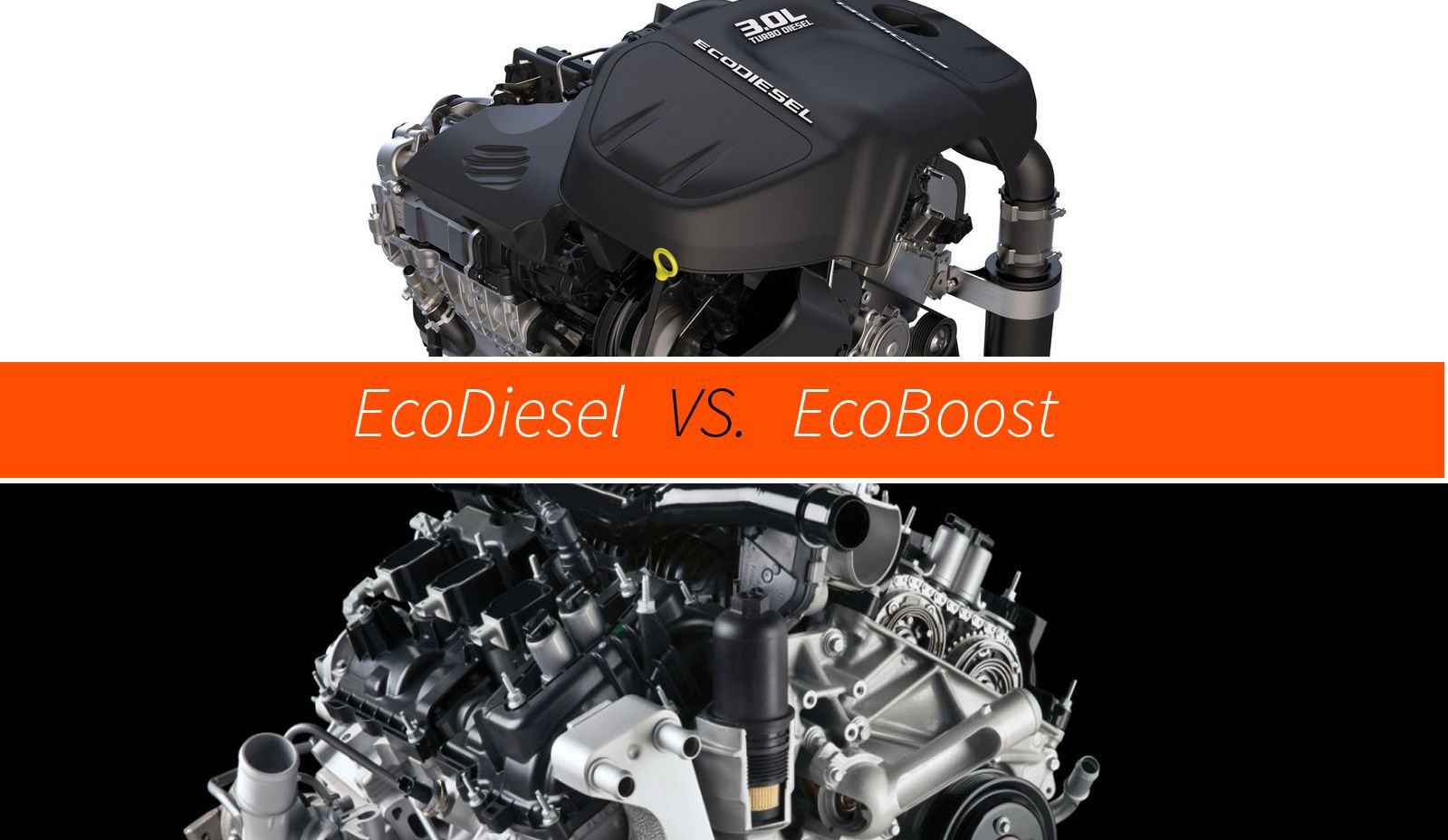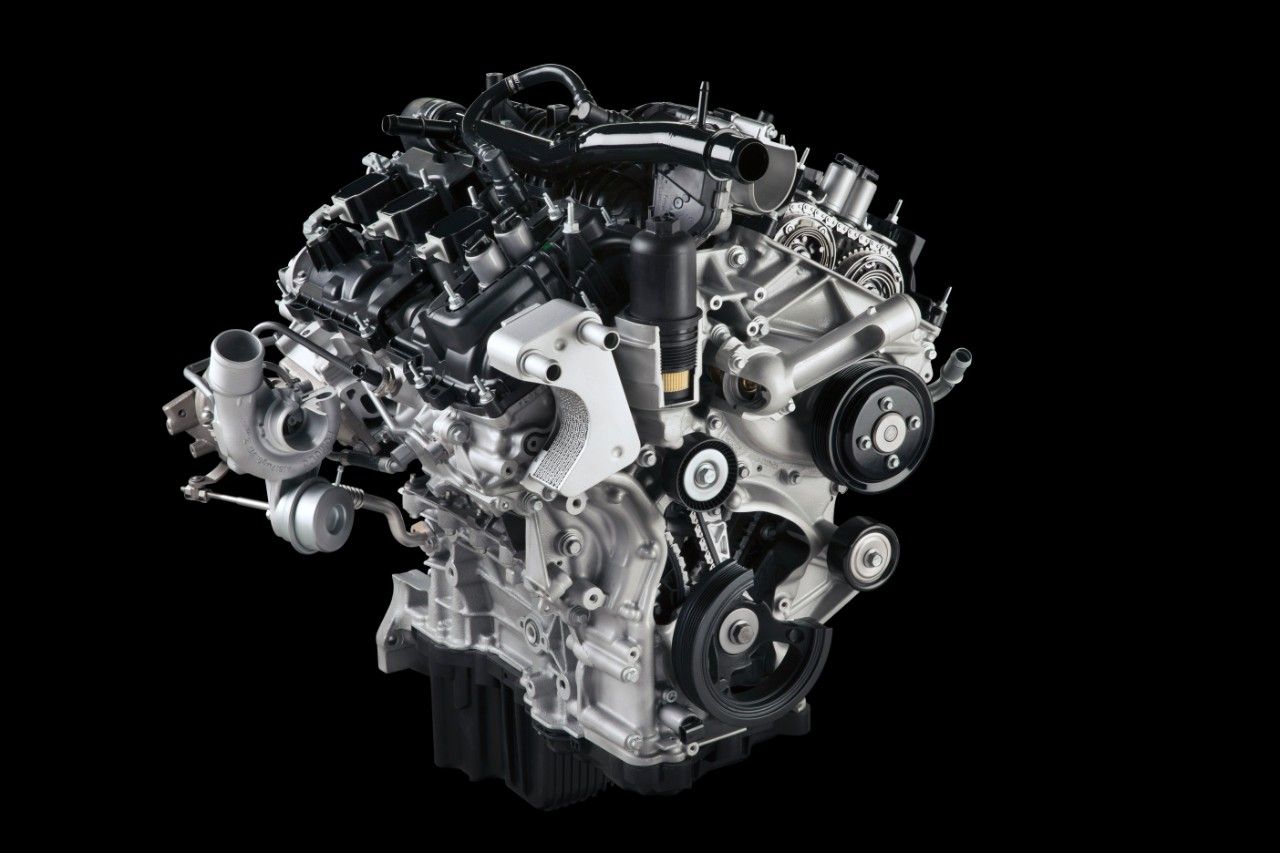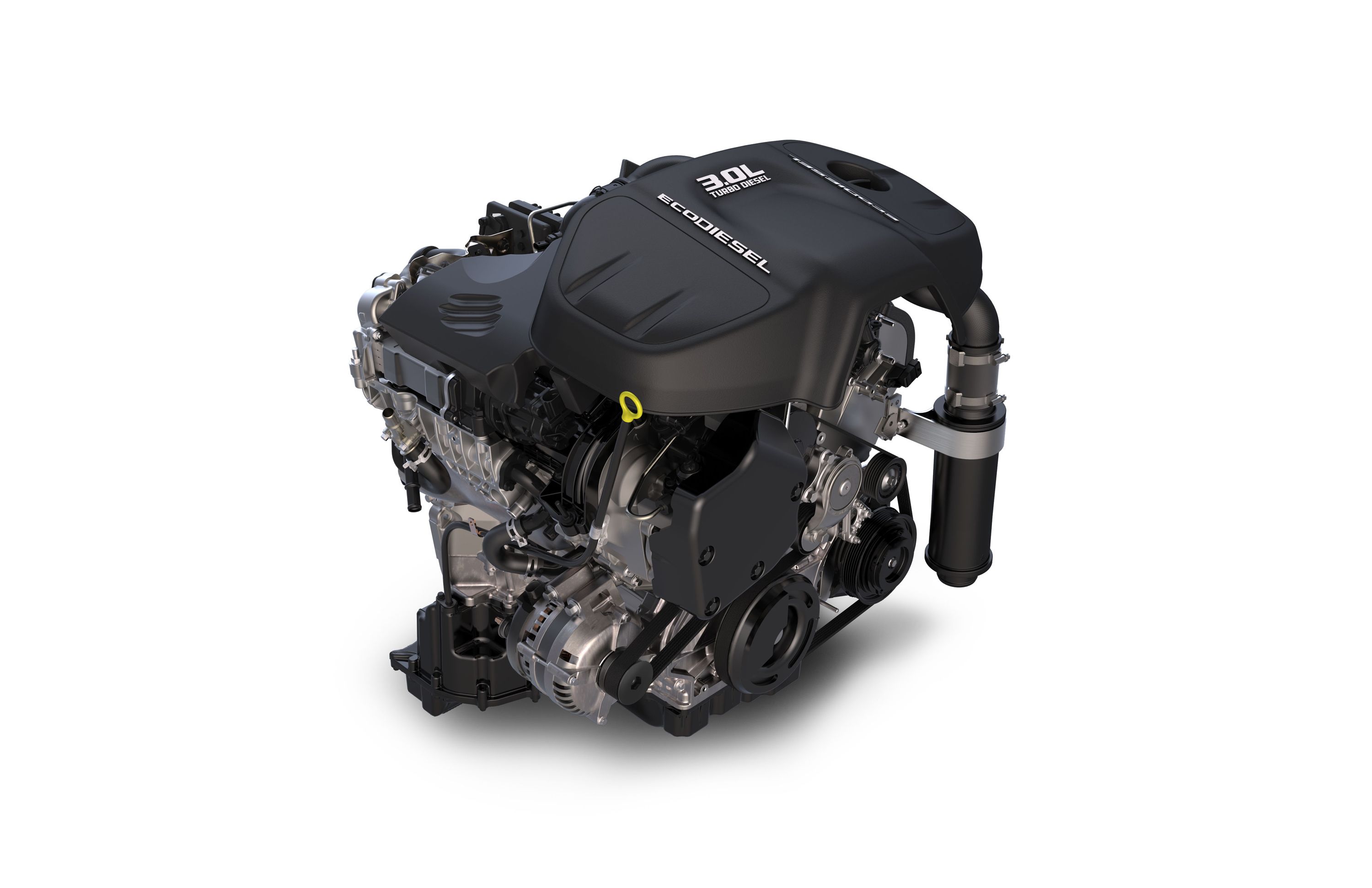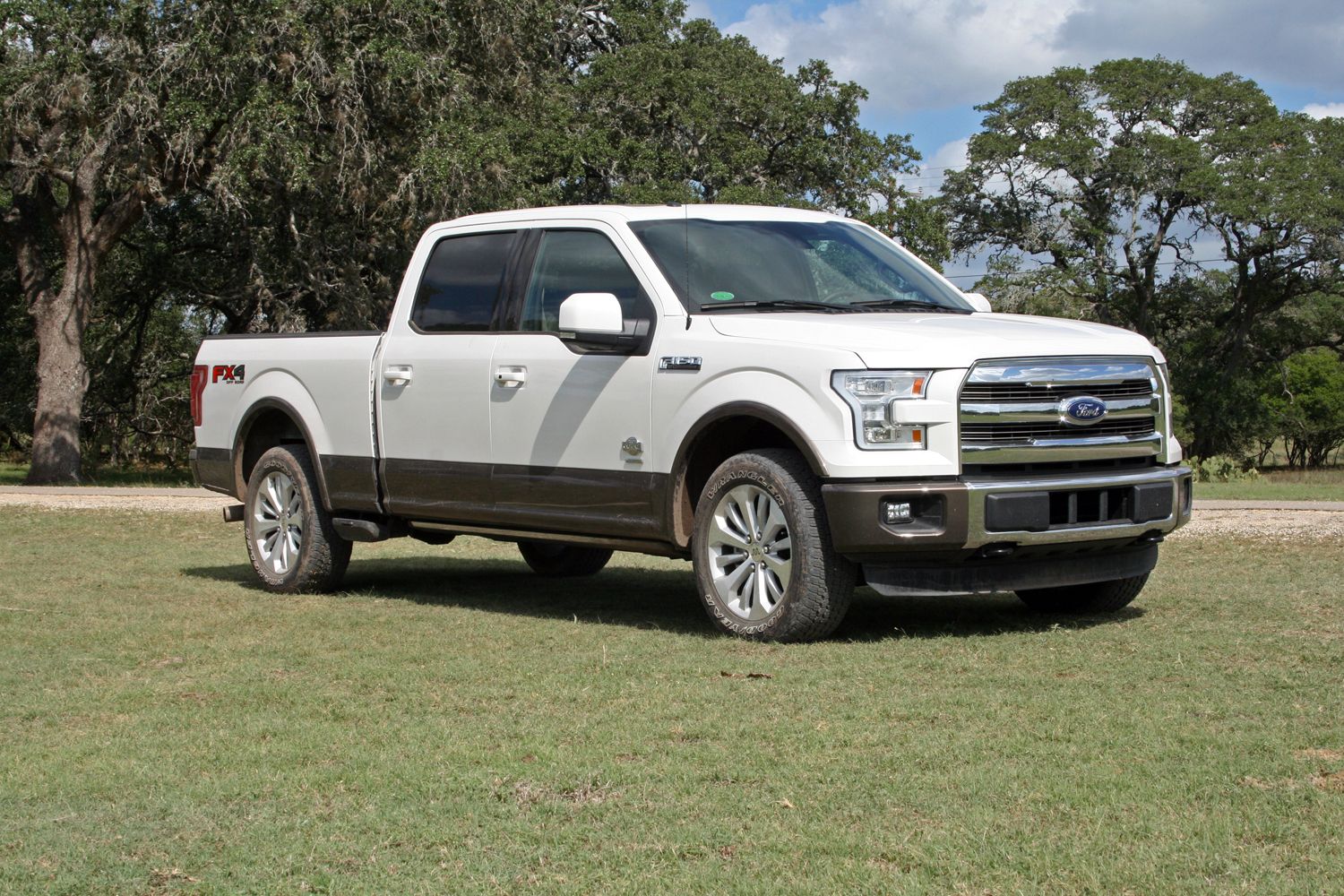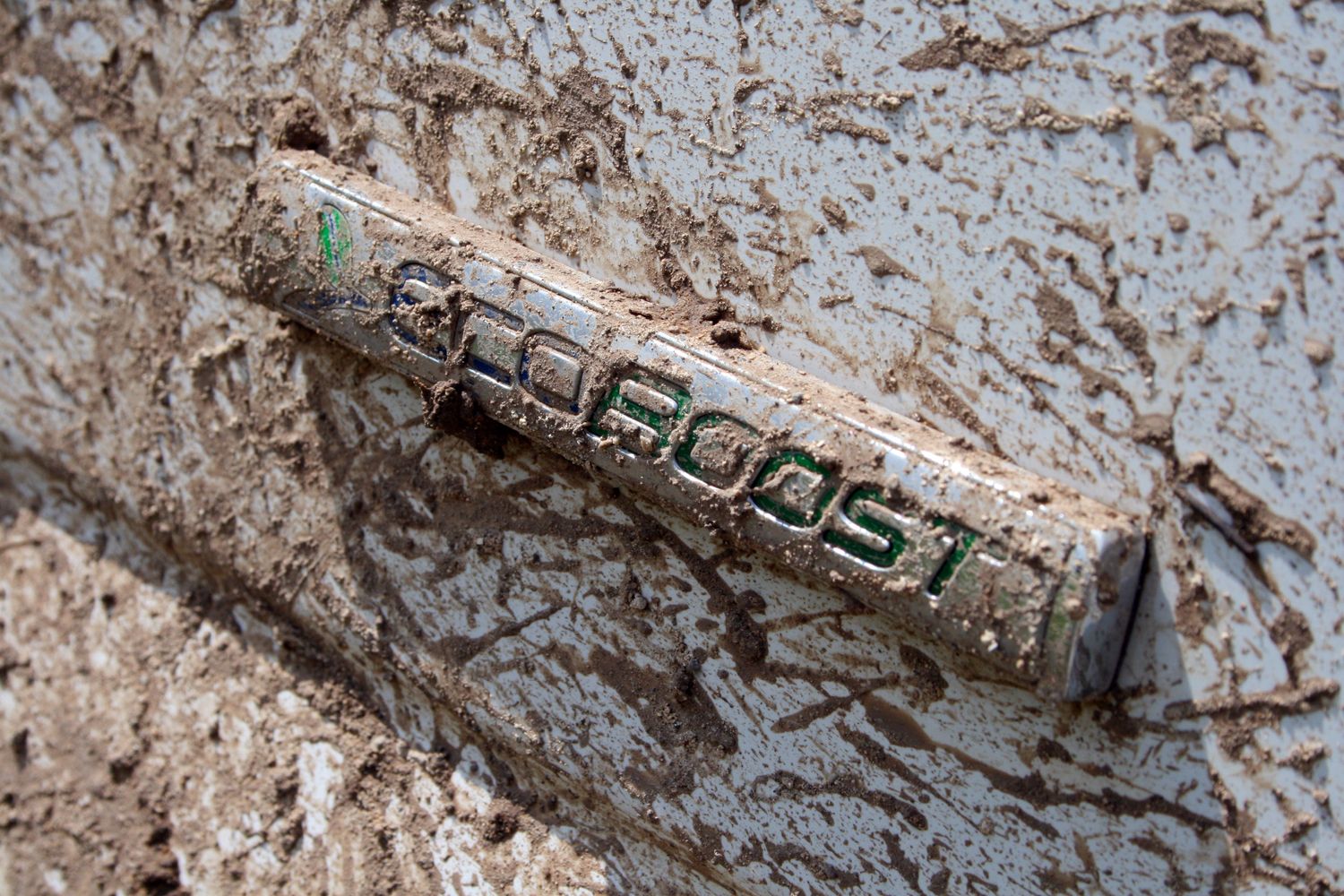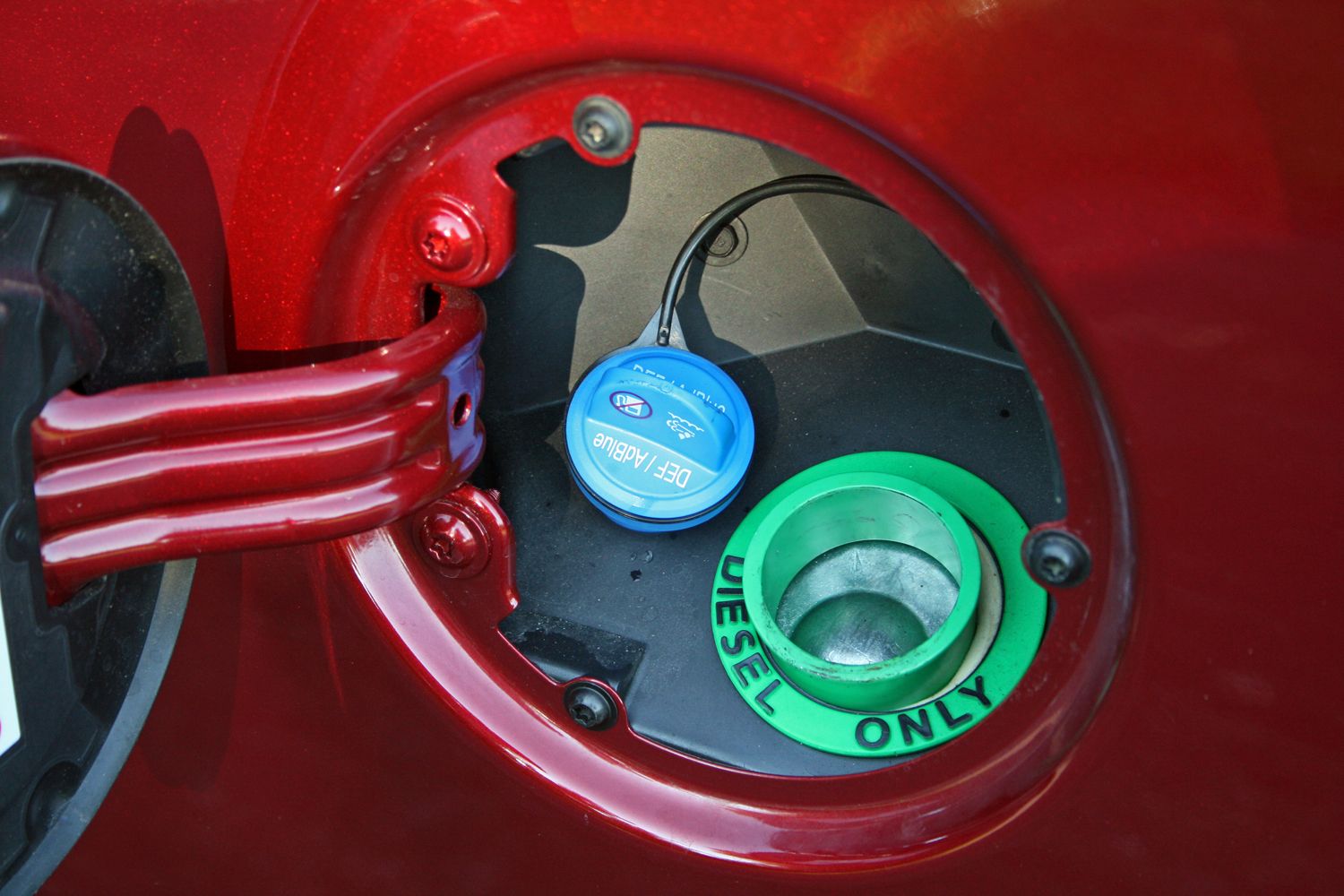So much of life is about choosing the right tool for the job – or at least, knowing what that job is before you choose the tool for it. Take the hammer, for instance. In theory, it's just a weight on a stick, used for bashing things. But there's a big difference between a ball peen and a sledge, between a recoil-less claw hammer and a deadblow. Not every hammer will do every job every time.
When Ford->ke31 introduced its EcoBoost engine in 2009, the stated goal was replacement of all larger-displacement engines with smaller, cleaner, and more fuel efficient turbo powerplants. In some ways, they've succeeded; compared to ye olde sledgehammer diesel, the EcoBoost is a slick, high-tech, high-speed nail gun. It's quick, easy to use, and as sophisticated as anything else that ever did the job.
But the EcoBoost design didn't come out of nowhere – just the fact that we're comparing these two very different tools should say something about how much of their designs they owe to each other. These two hammers are starting to look a lot alike. Even so, there's still a difference. The question today isn't so much "Which one is the right tool for the job?"
It's "Which job?"
Designs
Note: Ford F-150 2.7 Ecoboost engine pictured
Legendary diesel racer Gale Banks once said that diesel engines were getting more like gas engines all the time – and he was at least half right. New diesels do tend to rev much higher than older designs, and a lot of times they're intentionally de-tuned a little in the lower rpm range just to keep from breaking parts with massive torque. But there's a flip side to that, because gas engines are also getting more and more like diesels.
Call the EcoBoost "exhibit one" on that score. Ford's been pretty explicit about the fact that it always meant the EcoBoost and its twin turbos as a replacement for displacement. Sure, they could have built a high-rpm screamer that made a thousand horsepower at 8,000 rpm – but Ford's focus with the EcoBoost has always been on building massive low- to mid-range torque, with a table-flat curve running almost straight off idle. Just like a diesel.
They more or less succeeded, too. The strongest of the EcoBoost engines right now (the 365-horse 3.5-liter used in the Taurus SHO) delivers its peak 350 pound-feet all the way from 1,500 rpm up to 5,000 rpm. The 3.5-liter used in the F-150->ke423 peaks at 420 pound-feet and 2,500 rpm, but it still holds more than 350 pound-feet practically from idle to redline. That kind of power curve looks pretty similar to a lot of diesel racing engines, including those built by (you guessed it) Gale Banks.
And how did Ford do it? By building it like a diesel. The boost-control strategy is almost identical: Spool the turbos up very quickly, and then use a boost controller to keep its torque curve flat. That's exactly what Ford used to do with the Power Stroke; granted the Power Stroke used a variable-geometry turbos, while the EcoBoost uses fixed-geometry turbos and variable valve timing. But it's the same control method.
The EcoBoost's fuel system also comes directly from the diesel family tree. It uses direct injection, with the fuel (gasoline in this case) sprayed directly into the cylinders. Diesels have been using these systems consistently for a long time now, and Ford itself experimented with gasoline direct injection in the 1970s. Ironically, with the 460 V-8, which itself later became the pattern for the Power Stroke diesel.
But back then, they didn't have the computer controls or engineering experience to make it work on gas engines. A few decades of refinement on diesels, though, and now we've got computer-controlled, high-pressure, gasoline direct injection.
That direct injection has allowed Ford to get away with higher compression ratios, usually running between 9.5- and 10-to-1. So does the fact that the EcoBoost upper block is made of super-tough compacted graphite iron – the exact same material as the last Power Stroke.
Note: Ram 1500 3.0-liter V-6 EcoDiesel engine pictured
So: a combination of quick-spooling, boost-controlled turbos, higher compression, a tough block, direct injection, and a super-thick torque curve running from almost idle to redline. Sounds a lot like a diesel, doesn't it? In fact, it's probably fair to say that the only real difference in design between an EcoBoost and its diesel grandaddy is the fact that it uses gasoline. Quick-burning gasoline allows the engine to rev higher and burn more efficiently, which means more high-rpm horsepower and lower emissions. That gives the EcoBoost some of the best of both worlds, with the power curve of a diesel but the horsepower and low emissions of a gas engine.
It also gives the EcoBoost an edge in fuel economy – usually.
Comparison
Power
If you're cross-shopping a diesel and EcoBoost right now, you're probably not doing it in a Ford showroom. As of 2015, with the exception of a couple of foreign four-cylinders, Ford's not offering the EcoBoost in any vehicle that also comes with a diesel. That's probably not a coincidence. So, there's no direct comparison right now within the company – but that doesn't mean the EcoBoost isn't competing head-to-head with diesel.
Ram's EcoDiesel isn't just similar to the EcoBoost in name; it's a 3.0-liter V-6, uses turbocharging and direct injection, and also comes in a 1500-series truck. In this case, the Ram 1500. In terms of specs, that's a very close match for the 2.7-liter EcoBoost offered in the Ford F-150 right now. Ford also offers the 365-horse 3.5-liter Ecoboost as an option; but for the sake of apples-to-apples comparison, it's probably better to compare the 2.7-liter EcoBoost to Ram's 3.0-liter EcoDiesel. Raw figures first:
2.7-liter EcoBoost
- 325 horsepower at 5,750 rpm
- 375 pound-feet at 3,000 rpm
- 350 pound-feet from 1,900 to 5,000 rpm
3.0-liter EcoDiesel
- 240 horsepower at 3,600 rpm
- 420 pound-feet at 2,000 rpm
- 400 pound-feet from 1,900 to 3,500 rpm
Not too far off from what you'd expect for the typical gas-diesel relationship. The gas engine revs higher and makes more horsepower, while the diesel revs lower and makes more torque. A lot of it, in this case; Ram has been quick to point out that this tiny 3.0-liter produces more peak torque than the original heavy-duty Cummins engine used in the 1980s. That's a definite sign of progress – so is the fact that the Ram's 3.0-liter makes about 100 horsepower more than it's original predecessor.
But the EcoBoost, being a gas engine, utterly destroys the diesel in horsepower. Gas engines always have an edge there, if for no other reason than the fact that their fuel burns faster, and they rev to higher rpm. What's really impressive about the EcoBoost is the fact that it manages that trick while even comparing to the diesel in terms of torque output and torque curve.
Diesel fuel inherently has an edge when it comes to making torque: It contains 13 percent more energy per gallon than gasoline. So, all things being equal, a diesel will almost always make 13 percent more torque and get 13 percent better fuel economy.
Knowing that, look at those EcoBoost torque numbers again, and add 13 percent. You get 423 peak and 396 average – almost a dead match for the EcoDiesel's numbers. That's also with a 10 percent displacement handicap; if the EcoBoost were a 3.0-liter, it would almost certainly better the diesel's numbers when adjusted for the energy content of the fuel. All told then, the diesel does maintain an edge in torque based almost entirely on its more energy dense fuel – but the EcoBoost does more with the fuel that it uses.
Performance
There's no nice way to put this: The EcoBoost decimates the EcoDiesel in almost every performance metric. In two trucks with roughly the same 5,000 to 5,100-pound curb weight, the EcoBoost is a crushing 1.5 seconds quicker to 60 mph, and 0.7 seconds quicker through the quarter mile with the diesel falling quickly behind past that. It's interesting that the EcoDiesel does start to catch up once it gets to speed, which has a lot to do with its taller gearing and bigger torque. But the EcoBoost's sheer horsepower advantage means it will consistently take this particular diesel at the top end of the track. Never mind the 3.5-liter, which would beat the 2.7-liter by about a second in a similarly sized truck.
But you're probably not worried about hauling at the dragstrip as much as you are hauling mass around the highways, and that's where things get interesting.
The diesel, as you'd probably expect, has a slightly higher tow rating when similarly equipped. A Ram 1500 EcoDiesel is rated to haul 9,200 pounds, compared to a comparable EcoBoost F-150's still-pretty-impressive 8,500 pounds. Just to put that in perspective, both engines get utterly crushed by Ram's big 6.7-liter Cummins turbodiesel, which can haul a god-like 30,000 pounds up any mountain you chose without breaking a sweat.
That is one of the benefits of diesel: They work hard, but never feel like they are. Gas engines by nature have to rev higher, push harder, and burn hotter to extract the power they do. Diesels just do it, no complaint or questions asked.
And that's where the EcoBoost falls down.
The EcoDiesel-powered Ram rates at 20 mpg city and 28 mpg highway, compared to the EcoBoost's 19 mpg city and 26 mpg highway. You're right in thinking that's not too big of a difference, especially considering the EcoBoost's 50-horsepower advantage. But that's exactly the problem.
Turbocharged gas engines can be very efficient...when they're off boost. But a turbo-gas engine's fuel economy always drops like a rock when you push it hard, and the EcoBoost is no exception. Unloaded and un-stressed, it will absolutely compete with the diesel in terms of fuel economy. Which means it's actually cheaper to run, since diesel usually runs about 10 percent more per gallon. Just cruising around town or over the highway, not pulling anything or hauling a ton in the bed, the EcoBoost's ability to use cheaper fuel definitely pays dividends.
However, this script flips quickly when you start asking the EcoBoost to do things that a truck is supposed to do.
It's an article of canon at this point that EcoBoost fuel economy drops like a rock while towing. Because the engine has to dig deep into its boost and power band to haul the 8,500 pounds it can, don't be surprised to see fuel economy drop below 10 mpg. Even pulling an average trailer well shy of maximum weight will yank fuel economy down to 11 or 12 mpg.
Diesels, on the other hand, are legendary for just not giving a crap how much weight they're pulling. They're like that grumpy old veteran at the construction site who, no matter how much he's harassed, just shrugs and growls "It'll be done when I get it done."
Even while pulling its maximum weight, the EcoDiesel will hold fuel economy in the high teens; about 17 to 20 mpg on the highway isn't uncommon. Load the bed with every ounce it will carry, and you might lose 2 to 3 mpg city and highway. In this way, diesels are a lot like big-block V-8 engines; they might get moderate to bad fuel economy per dollar spent, but at least they're going to get it all the time. With torque this high and an rpm band this narrow, there just isn't much you can ask of a diesel that will force it to do anything it isn't doing all the time anyway.
Summary
In terms of price and weight, the EcoBoost about matches most modern diesels. Credit the fact that the EcoBoost is heavy and expensive for a V-6, while modern diesels are lighter and cheaper than they've traditionally been.
Gale Banks was right about gas and diesel engines becoming more and more alike in the future. A couple decades ago, it's pretty unlikely you'd have even been reading a comparison like this; the two engines inhabited non-overlapping domains. Gas was for going fast, and diesel was for hauling mass. Period. And that still is more or less the case.
If you're using your truck the way most people do most of the time these days (as point-to-point transportation), it's hard to make a case against the EcoBoost. It offers all of the benefits of a gas engine all the time, and most of the benefits of a diesel when called upon. It's also inherently cleaner than diesel, just by virtue of the fact that gas burns hotter and more thoroughly. For most people, then, the EcoBoost is almost certainly the better choice. Unless you spend a lot of time hauling serious tonnage, it will to prove cheaper to operate and probably a lot more fun to drive.
But, if you're using your truck the way trucks are meant to be used – as utilitarian movers of heavy objects – then you'll likely find a diesel the best tool for the job. Not only will the diesel return better fuel economy when it's working, it will do any job you ask of it without strain or complaint, all day, every day, probably for many years to come without failure. There's something to be said for taking life low and slow.
In a way, it's kind of cool that some of the best gas engines out there today became the best by pirating technology from diesels. By effectively becoming them. And that might be the best way to look at the EcoBoost; not so much as a gas engine, but as a diesel engine that burns gasoline. If you can't beat em...
But isn't that always how tools evolve? Keep the good parts, throw away the bad, and refine them into a more versatile piece of equipment. That is how hammers wound up with claws, after all. But even today, not all tools are created equal; not all do different jobs as well as every other. So, when choosing between two turbocharged, directed-injected, high-torque, high-strength engines, the real question is...
What job do you want them to do?

